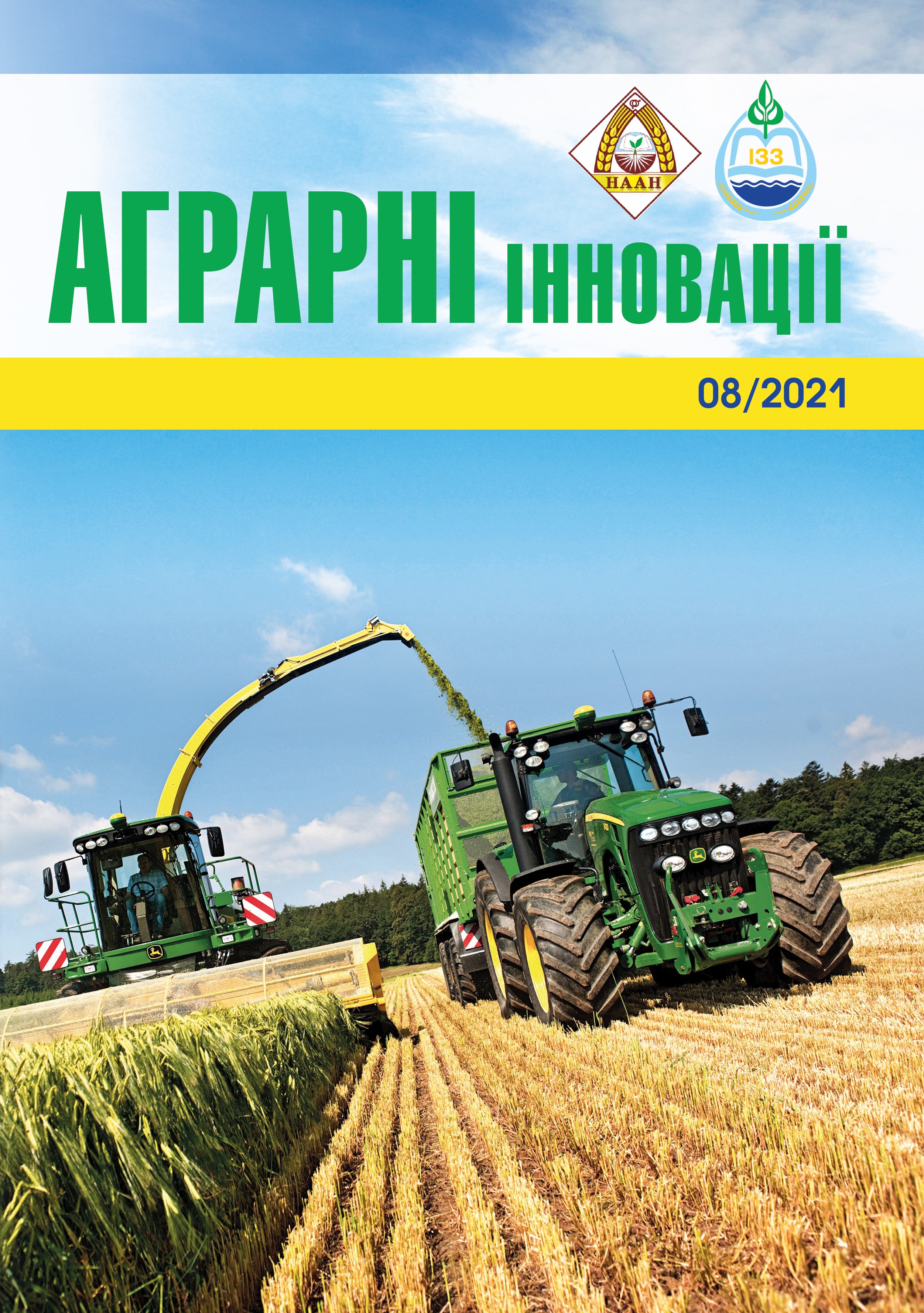Current state of the world methodological approaches to determination of granulometric composition
Abstract
The article reviews the world literature on methodological approaches in determining the granulometric composition of soil by different methods, both classical and modern – laser diffraction method (LDM). Analyzing the publications related to the determination of granulometric composition, it can be noted that the application of different methods and soil texture classifications has led to differences in the use of sieving (sieves with different hole diameters) and differences in fractional boundaries in sedimentation methods (aerometric and pipetting). Organoleptic methods used in Ukraine (dry and wet), although similar in implementation to those proposed by FAO for field conditions, but use different classifications. As for the method of laser diffraction, the preparation of samples for analysis is based on classical methods, using them as a reference, and therefore sample preparation is done similarly, using the same reagents and methods for removing organic matter, carbonates, soluble salts, and similar sample disaggregation. The effect of sample preparation for analysis on the results of particle size distribution is determined by using a laser diffractometer at the same instrument settings. Differences in the structure of instruments and applied optical or detector systems lead to different data with the same preparation of samples for analysis. Comparison of the data obtained by classical methods with the data of the laser-diffraction method indicates the need for further research in using, because so far the data are different and have to be correlated. This does not prevent using LDM while determining soil texture by different classifications. Therefore, the laser diffraction method can be used in the future to adapt the data of Kachinsky method to international classifications, which will help work with FAO on the impact of climate change and desertification on the soil.
References
2. Allen T. Powder Sampling and Particle Size Determination. Amsterdam, the Netherlands. Elsevier B.V. 2003. 683 p.
3. Schulte P. Laser diffraction size analysis of loesspaleosol sequences – pretreatment, calculation, interpretation: Dissertation. Tag der mündlichen Prüfung: 18.04.2017 163 p. URL: http://publications. rwth-aachen.de/record/691033/files/691033.pdf
4. Юдина А. В. Лазерная дифрактометрия в почвоведении: методические аспекты и диагностическое значение : дисс. … канд. биол. наук : 06.01.03. Москва, 2018. 251 с.
5. Laser diffraction as an innovative alternative to standard pipette method for determination of soil texture classes in central Europe. / Igaz D. [et al.]. Water. 2020. V. 12, 1232; https://doi.org/10.3390/w12051232.
6. Moeys J. The soil texture wizard: R functions for plotting, classifying, transforming and exploring soil texture data. 2019. URL : https://cran.r-project.org/web/packages/soiltexture/vignettes/soiltexture_vignette.pdf (дата звернення 30.04.2021 р.).
7. ISO 13320:2020(E) Particle size analysis – Laser diffraction methods. [Second edition 2020-01] International Standard. Geneva, Switzerland, 2020. 66 p.
8. FAO. 2020. Soil testing methods – Global Soil Doctors Programme – A farmer-to-farmer training programme: FAO. Rome, 2020. 100 p. URL : https://doi.org/10.4060/ca2796en
9. Working paper: Documentation of tests on particle size methodologies for laser diffraction compared to traditional sieving and sedimentation analysis. /C. Rasmussen, K. Dalsgaard Aarhus Universitetsforlag ISBN: 978-87-7507-390-0 2017. P. 35. URL : https://doi.org/10.7146/aul.205.148
10. The validity of laser diffraction system to reproduce hydrometer results for grain size analysis in geotechnical applications. / Al-Hashemi B. H. M. [et al.]. PLOS ONE January 14, 2021 V.16(1) URL : https://doi.org/10.1371/journal.pone.0245452
11. Gorączko A., Topoliński S. Particle Size Distribution of Natural Clayey Soils: A Discussion on the Use of Laser Diffraction Analysis (LDA). Geosciences. 2020. V.10(2),55. P. 1-9. URL : https://doi.org/10.3390/geosciences10020055
12. Evaluation of soil texture determination using soil fraction data resulting from laser diffraction method. / Mako A. [et al.]. International Agrophysics. 2019. V.33. P. 445-454 URL : https://doi.org/10.31545/intagr/113347
13. Lucke B., Schmidt U. Grainsize analysis of calcareous soil sand sediments: intermethod comparison with and without calcium carbonate removal. Erlanger Geographische Arbeiten Band 2015. V.42 P. 83–98. https://www.researchgate.net/publication/290946097 (дата звернення 20.04. 2021)
14. Adequacy of laser diffraction for soil particle size analysis. / Fisher P. [et al.] PLoS ONE May 4 2017. V.12(5): e0176510. URL : https://doi.org/10.1371/journal.pone.0176510
15. Pedotransfer functions for converting laser diffraction particle-size data to conventional values. / Makó A. [et al.]. European Journal of Soil Science. September 2017. V.68. P. 769–782. URL: https://doi.org/10.1111/ejss.12456
16. Gresina F. Comparison of pipette method and state of the art analytical techniques to determine granulometric properties of sediments and soils. Hungarian Geographical Bulletin. 2020. V.69(1). P. 27–39. DOI: https://doi.org/10.15201/hungeobull.69.1.3
17. Ryzak M., Sochan A., Barna G., Hernadi H., Beczek M., Polakowski C. and Mako A. Laser Diffractometer in the Measurements of Soil and Sediment Particle Size Distribution. / Bieganowski A. [et al.]. Advancesin Agronomy. 2018. V. 151 ISSN 0065-2113. URL : https://doi.org/10.1016/bs.agron.2018.04.003
18. Болдырева В. Э., Безуглова О. С., Морозов И. В. К вопросу об определении гранулометрического состава почв с использованием метода лазерной дифракции. Научный журнал Российского НИИ проблем мелиорации. 2019. № 1(33). С. 184-194. DOI: 10.31774/2222-1816-2019-1-184-194






